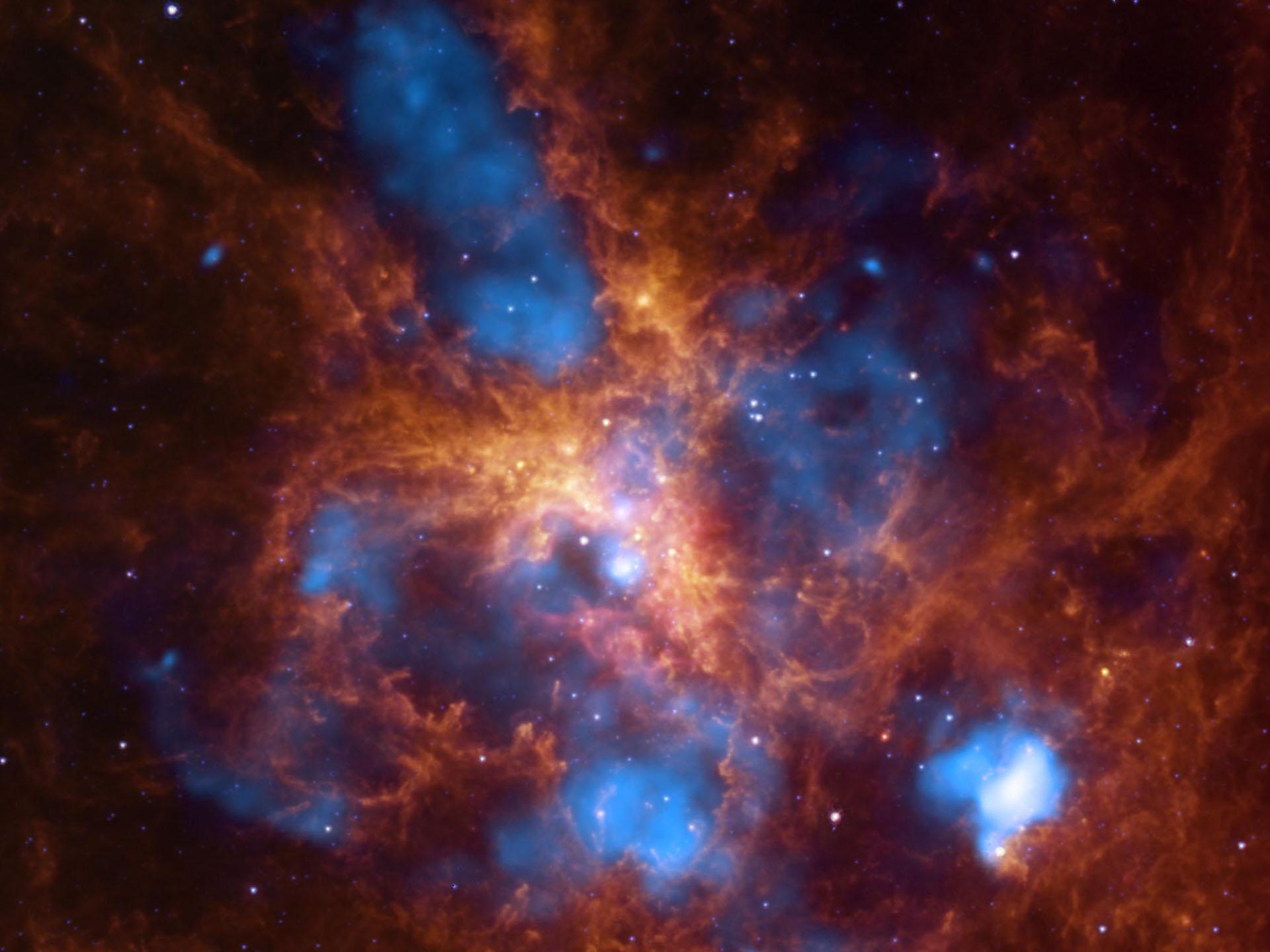'Astonishing' overabundance of massive stars found in neighbouring galaxy
Discovery could change the way we understand composition of the universe

Your support helps us to tell the story
From reproductive rights to climate change to Big Tech, The Independent is on the ground when the story is developing. Whether it's investigating the financials of Elon Musk's pro-Trump PAC or producing our latest documentary, 'The A Word', which shines a light on the American women fighting for reproductive rights, we know how important it is to parse out the facts from the messaging.
At such a critical moment in US history, we need reporters on the ground. Your donation allows us to keep sending journalists to speak to both sides of the story.
The Independent is trusted by Americans across the entire political spectrum. And unlike many other quality news outlets, we choose not to lock Americans out of our reporting and analysis with paywalls. We believe quality journalism should be available to everyone, paid for by those who can afford it.
Your support makes all the difference.Astronomers have found that a galaxy close to our own is full of “massive stars”.
The discovery could have significant consequences for our understanding of the universe.
In the “star-forming” region known as 30 Doradus in the Large Magellanic Cloud galaxy there is an abundance of large stars many times the mass of our own Sun.
In most parts of the universe, larger stars are considered rare.
But when the astronomers used a device termed the “Very Large Telescope” to investigate 30 Doradus, they discovered nearly 1,000 massive stars.
According to Dr Fabian Schneider, an astronomer at the University of Oxford, who led the international research team undertaking this study, the researchers were “astonished” by this number.
“We counted them in this huge star forming region and we thought ‘wow – there are actually many more than we thought’,” he said.
Their results, published in the journal Science, could change the way astronomers understand the composition of the universe as a whole.
As their name suggests, star-forming regions are the regions of the universe in which stars are born.
“What you need for that is a big molecular cloud full of gas and dust – literally the kind of dust you would have somewhere on your bookshelves,” explained Dr Schneider.
“Then these materials collapse under their own gravity, and in this collapse they form stars.”
But the proportion of stars born “massive” – at least 10 times the mass of the Sun – was thought to be less than 1 per cent.
In 30 Doradus, however, the scientists found around a third more massive stars than had previously been assumed in this region of the galaxy, and they think similar numbers could occur elsewhere.
Their work also suggested stars in the region were far larger than had previously been thought possible, with some individuals 200 times more massive than the Sun.
“These massive stars are beasts. They are extremely bright – a 100 solar mass star produces something like a million times the radiation or luminosity of our Sun,” said Dr Schneider.
Prior to this study, most astronomers had expectations – dating back to 1955 – about how star forming works, and the numbers of massive stars in the universe.
In this work, which Dr Schneider has been undertaking for the past decade, the scientists harnessed sophisticated technology and techniques to make more accurate measurements of 30 Doradus.
Stars are “cosmic engines” that produce powerful radiation and stellar winds, as well as most of the elements that make up the universe.
Through these mechanisms, stars shape the universe as we know it, and the bigger a star is, the bigger the impact on its surroundings.
That is why it is crucial to understand how many of these particularly large stars the universe contains.
“To quantitatively understand all these feedback mechanisms, and hence the role of massive stars in the universe, we need to know how many of these behemoths are born,” said Professor Philipp Podsiadlowski, a co-author of the study, also based at the University of Oxford.
Higher prevalence of massive stars means more supernova explosions, black holes and neutron stars.
Based on their study of 30 Doradus, the scientists think there could be more stars all over the universe, and this could have profound effects on our understanding of the universe.
“It is conceivable now that we have many more of these massive stars in the very first star forming regions of the universe,” said Dr Schneider.
“Our results have far-reaching consequences for the understanding of our cosmos,” he added, noting there might be 70 per cent more supernovae and up to 180 per cent more black holes.
For now, the researchers said there is still much to learn about massive stars and their impact on the cosmos.
“This is going to be exciting for the future to see what this really means,” said Dr Schneider. “We will have to see.”
Join our commenting forum
Join thought-provoking conversations, follow other Independent readers and see their replies
Comments